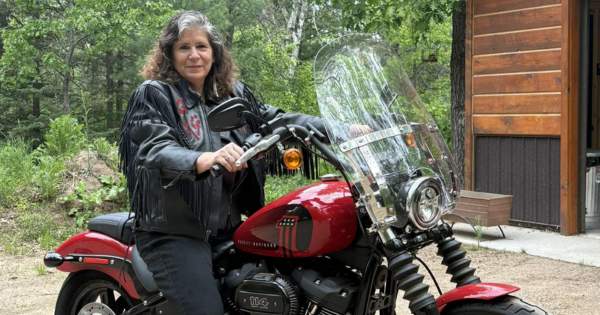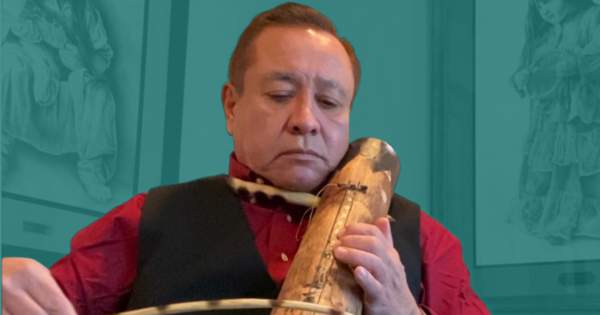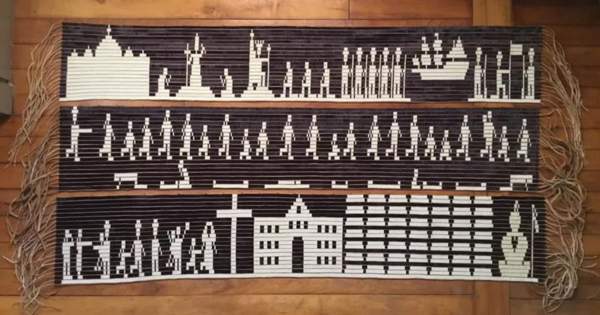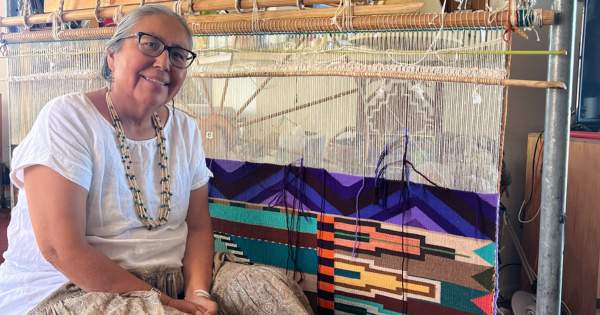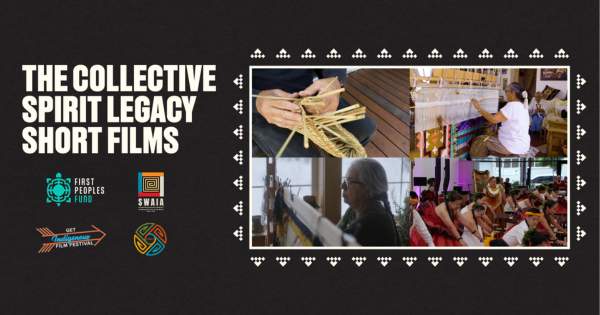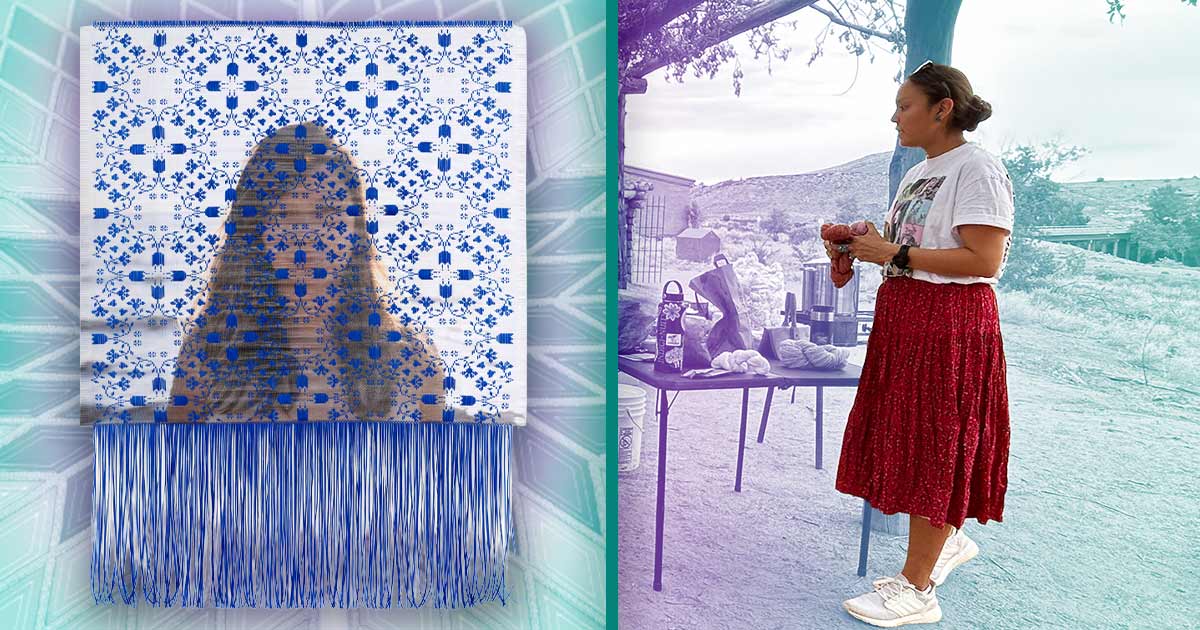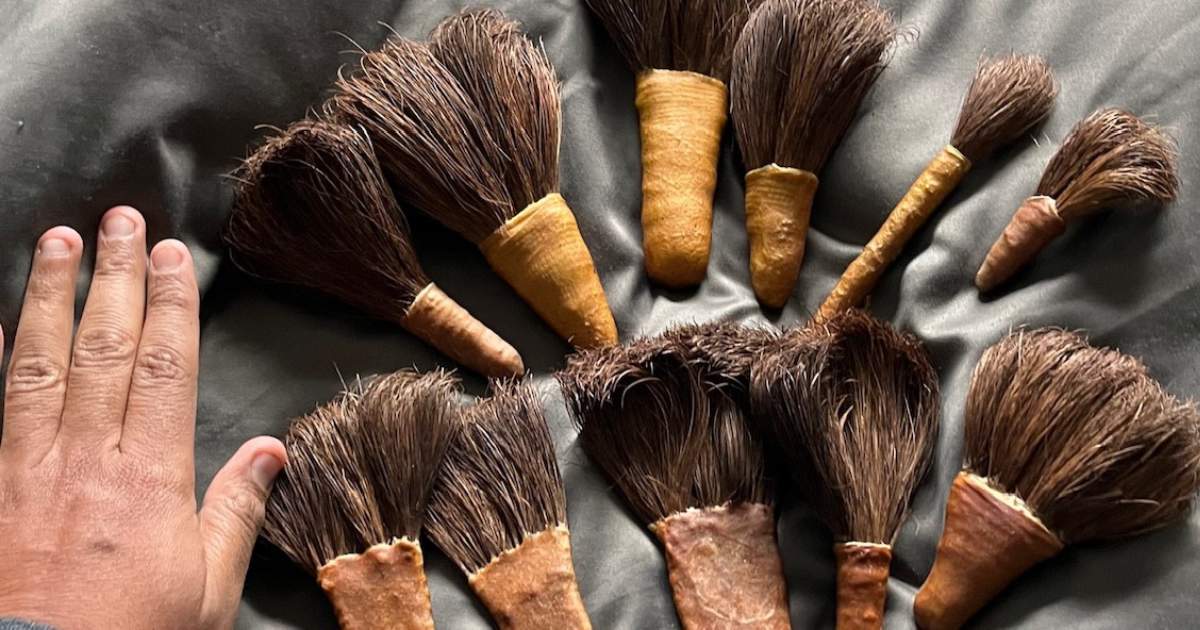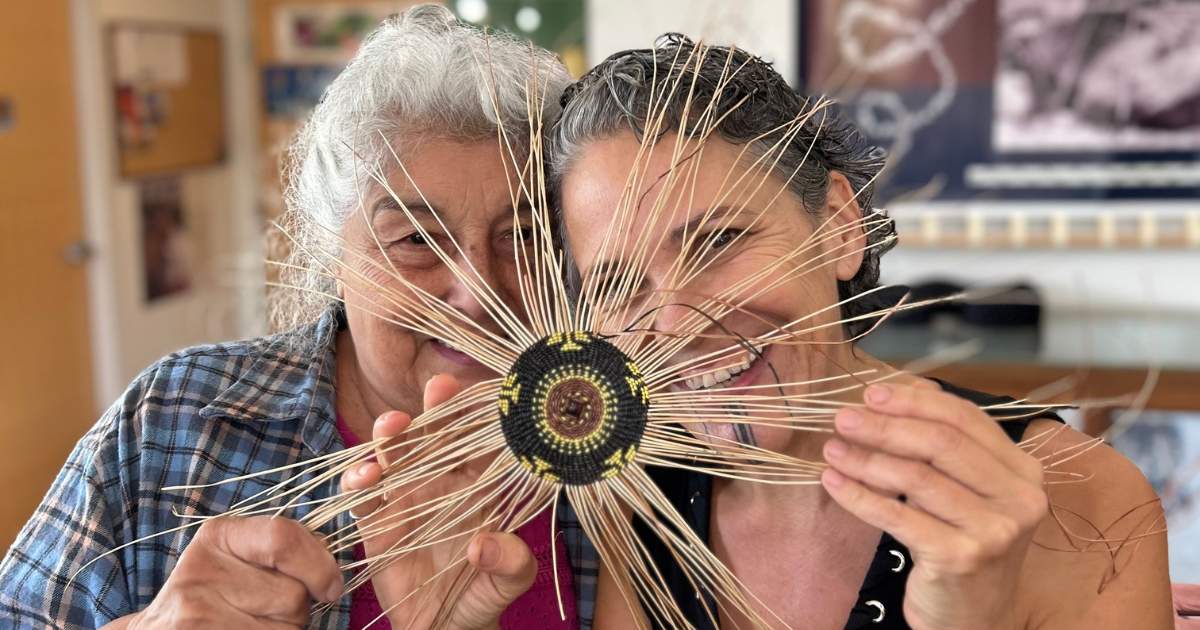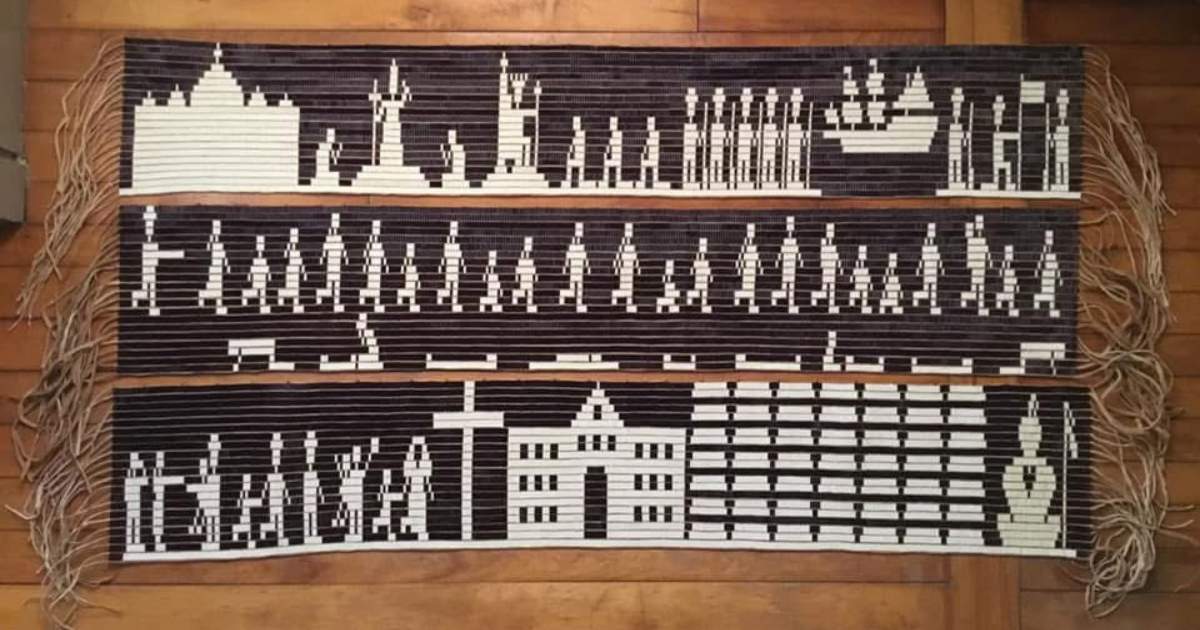
Tlingit artist weaves her vision, and the community responds
Lani Hotch (Tlingit) has a vision. When people first walk through the Chilkat weaving exhibit in her community’s first Native heritage center, they will be not only educated on her tribe’s history but moved by the importance of weaving throughout the generations.
Hotch, who is a member of the Chilkat Indian Village in Haines, Alaska, first came to know First Peoples Fund when receiving the prestigious Community Spirit Award in 2011. Currently, as a First Peoples Fund 2015 Cultural Capital Fellow, she spent the year moving forward with her work to build the Jilkaat Kwaan Cultural Heritage Center. The building for the center has been framed and it is set to open in May 2016.
“This is the culmination of my adult life’s work,” said Hotch, who first learned how to weave from her grandmother.
Hotch made a name for herself in the weaving world when she was part of a group of local women in 1992 who started the Klukwan Healing Robe. It took eight years to finish the robe, which is representative of the self-guided healing that Native people can take ownership of, she said. She got the idea after reading about how some Holocaust survivors said they began to heal as their stories were honored and told through museums dedicated to honoring those who suffered and those who died.
“Our own people need a way to get past our generational trauma,” she said. “That’s how I thought of the healing robe. It’s something tangible to deal with the intangible.”
The completion of the robe secured her desire to continue weaving—and to continue spreading the art form of weaving on to the next generation.
Hotch has since worked in several cultural arts focus capacities, including at the Klukwan School where she started the Tlingit Language and Culture Program, and for the Chilkat Indian Village Tribe.
She is currently working on a small robe that will include a maritime theme, a reflection of the fact that Klukwan sits on the north bank of the Chilkat River. It’s just one way that weaving can speak stories and life, history and even geography to people. It’s one way her tribe has been speaking for generations.
“Klukwan is known for its legacy of weavers,” Hotch said. “And we want to share that.”
Working with First Peoples Fund has been an encouragement, Hotch said. Not only has the fellowship helped her secure contracts with artists to display in the heritage center, President Lori Pourier played a central role in helping Hotch secure the first major grant for the building. “I was discouraged and I was trying to come up with funding,” she said. “I called Lori and asked her if she knew of any sources and she gave me a list.”
One of the organizations on the list had an applicable grant that Hotch applied for and received, in the amount of $107,000, to move forward on the building. “It was just what we needed,” she said.
Hotch said she hopes her work, and the work on display in the Jilkaat Kwaan Cultural Heritage Center will be a true testament of her tribe, she said, as it will play a key role in the long-term goals of cultural revitalization and economic development in the region.
“It will have cultural displays that feature what our community members have decided were some of the most compelling aspects of our community,” she said.
Hotch said she has been honored to work alongside dozens of volunteers in her community as they bring the dream of the heritage center to life.
“It’s monumental,” she said. “It’s not just me. It’s the whole community. They’re behind it.”
